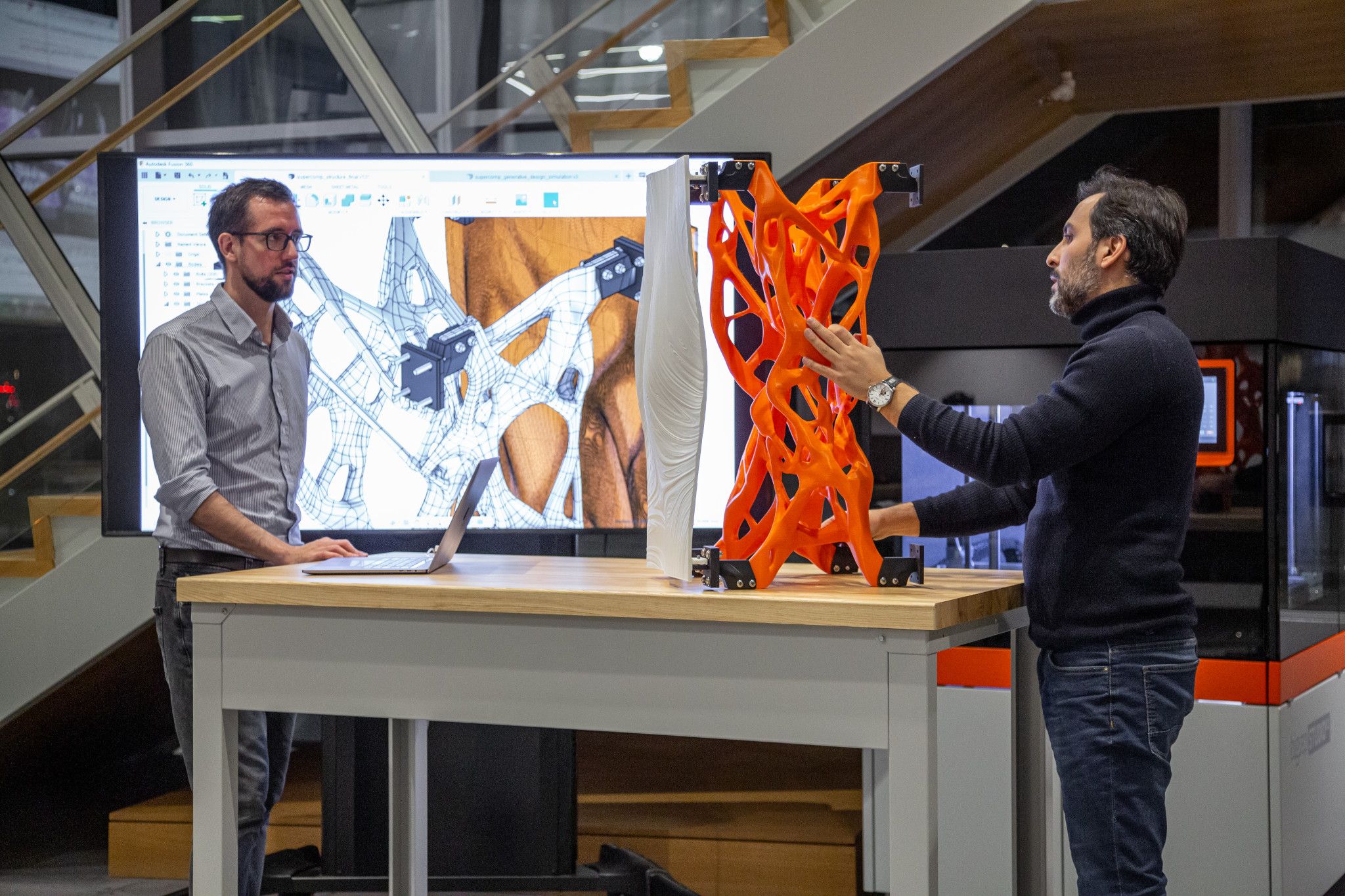Design Collaboration with Artificial Intelligence

Collaboration has always been central to the design process. For most of human history, that meant collaborating with other people to find an optimal solution. Today, you have another option: collaborating with artificial intelligence (AI).
AI can do things humans can’t. It can generate and evaluate thousands of design solutions in the time it takes you to refill your coffee cup. It can compare, iterate, and solve for challenges before a human designer understands what the challenges are, and achieve multiple objectives, even when the objectives seem to conflict.
In the Autodesk Co-Lab, part of the FUTURES exhibit in the newly reopened Smithsonian Arts + Industries Building (AIB) in Washington, DC, visitors have the opportunity to see what’s possible and collaborate with AI in real time. In Future Communities, an interactive multiplayer game experience, visitors can collaborate with each other and AI to design an urban block that balances requirements for people, business, and the natural world. Visitors can also learn about real-world examples of generative design in action—from the Starck chair to an interplanetary lander from JPL to Hyundai’s walking car. And the entire experience is housed within a sustainable, generatively designed timber structure.
You don’t have to wait for the future to start collaborating with AI. The tools and the capabilities exist today. Check out these resources to build your skills.
Generative design
One of the easiest ways to get started collaborating with AI is by using generative design. It’s available in a range of Autodesk tools, from Fusion 360 and Inventor to Revit and Civil 3D, enabling you to put it to work for projects across industries. In Generative Design: Using Dynamo for Multifamily Residential, Harish Palani and Ramya Palani explain how Dynamo scripts for multifamily residential design can provide your firm with limitless options.
With generative design, it’s possible to explore different scenarios and find the best solutions to the problem, all while balancing multiple objectives. When applied to road networks, this means automating the creation of complex models like corridors. Discover how to apply computational design to road networks with Paolo Serra’s Optimize Road Design with Dynamo for Civil 3D and Generative Design.
And if your focus is product and industrial design, check out A Practical Guide for Generative Design in Product and Industrial Design with Alex Lobos. Get up to speed on best practices, find out how to align outcomes with the original vision, and learn how to merge geometries with other components modeled directly in Fusion.
AI assistants
Generative design is just one kind of AI—there are many others. The incredible increase in computing power has given rise to AI assistants, for example—the kind of AI that helps you navigate traffic or compose an email. They also have a key role to play in product design, according to Mike Kuniavsky, Nikolas Martelaro, and Nick Akiona in AI, Digital Twins, and the Future of Product Design Processes.
Spacemaker enables outcome-driven design in the early stages of AEC projects. Using physical data, site constraints, regulations, and local preferences, planning and design teams can create an optimal proposal from a 3D model that serves as a single source of truth for all parties. Daniel Gameiro shares the details in Accelerate Your Project Planning and Design Process with Spacemaker.
To explore the future of human-machine collaboration, Japanese manufacturer OMRON built a robot that can play table tennis. The robot, named FORPHEUS, was created with generative design and other automation technologies. While the ping pong is fun, the ultimate goal is to advance research into AI and the impacts this developing area of collaboration could have on homes and factories.
BIM 360 for collaborating with people
Working on a project involving multiple disciplines with different companies? BIM 360 is here to help. In BIM 360 for Design Collaboration, Review, and Issues Management, you’ll discover the various workflows for design collaboration, review, and issues management that enable cross-party connectedness.
And that’s just the beginning. Explore hundreds of free classes about generative design and artificial intelligence anytime.




